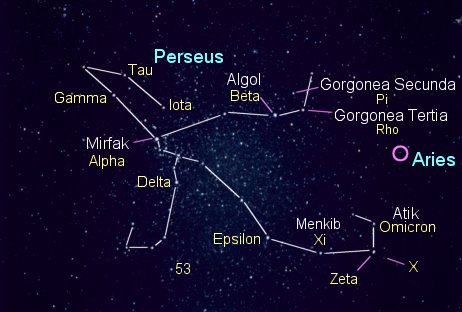

THE PLANETThe circle shows the location of the class G dwarf star HD 20367 relative to stars of Perseus, which is depicted here. Though actually in Aries, the star is just barely over the formal border between the two constellations. HD 20367's planet, with a mass at least 1.07 times that of Jupiter, orbits with a period of 500 days, or 1.37 years, at an average distance of 1.25 Astronomical Units (187 million kilometers, 117 million miles), or 25 percent farther than the Earth is from the Sun. A modest orbital eccentricity takes the planet from as far as 1.54 AU from its parent star to 0.96 AU. |